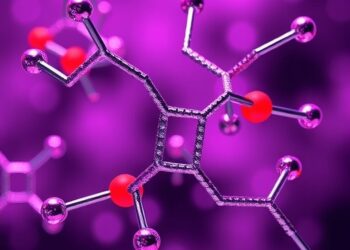New chemistries for batteries, semiconductors and more could be easier to manufacture, thanks to a new approach to making chemically complex materials that researchers at the University of Michigan and Samsung’s Advanced Materials Lab have demonstrated.
Their new recipes use unconventional ingredients to make battery materials with fewer impurities, requiring fewer costly refinement steps and increasing their economic viability.
“Over the past two decades, many battery materials with enhanced capacity, charging speed and stability have been designed computationally, but have not made it to market,” said Wenhao Sun, the Dow Early Career Professor of Materials Science and Engineering at U-M and the corresponding author of the study published in Nature Synthesis.
“A lot of times, a simple material is a good starting point, but when you add a little bit of compound A and a little bit of compound B, magic happens and you get big improvements in capacity or charging rate. However, these chemically complex materials are often difficult to manufacture at scale with high purity.”
Battery materials are typically made by mixing several different oxide powders and firing them in an oven. However, these powders react in a sequence rather than all at the same time. The first two ingredients to react are usually those that release the most energy upon reacting. The first reaction results in an intermediate compound that then reacts with the remaining powder, and so on, until no more reactions are possible.
If the chemical bonds in the intermediate compounds are difficult to break, they might not fully react with the other ingredients. When they don’t fully react, the intermediates hang around as undesired impurities in the final material.
“We designed a strategy to make impurity-free materials more reliably,” said Jiadong Chen, the first author of the study and a U-M doctoral student in materials science and engineering and scientific computing. “The trick is to only work with two ingredients at a time, and deliberately make unstable intermediates that will react completely with the remaining ingredients.”
To test this strategy, Sun’s team designed 224 different recipes to create 35 different known materials containing elements used in today’s batteries and next-generation ‘beyond-lithium’ batteries.
The researchers then partnered with Samsung Semiconductor’s Advanced Materials Lab in Cambridge, Massachusetts, to test if their recipes produced these 35 materials with fewer impurities than conventional recipes. Samsung’s automated robotic lab can synthesize up to 24 different battery materials every 72 hours.
Robotic arms handle the ingredients and operate the lab equipment that assesses the purity of the resulting materials. Meanwhile, computers automatically record the results of each experiment, creating a database that researchers can use to determine which recipes worked best.
“With the automatic lab, we could broadly test our hypothesis on diverse battery chemistries,” Chen said.
The experiments confirmed that the new recipes with ingredients designed to be unstable tended to produce cleaner products. The new recipes improved the materials’ purity by up to 80%, and six of the target materials could only be made with new recipes.
Blueprints for the robotic lab were detailed in the team’s report, which Sun hopes will enable more chemistry labs to adopt robotic labs for both science and materials manufacturing.
“We need more data—not just from successful recipes but also the unsuccessful ones—to improve materials manufacturing strategies. More robotic labs will help generate the needed data,” Sun said.
These labs are within reach for most research institutions and could significantly speed up materials development, the researchers say.
“The startup cost for the robotic equipment is about $120,000—not as high as you might think. But the payoffs in throughput, reliability and data-management are invaluable,” said study co-author Yan Eric Wang, principal engineer and project manager of Samsung’s Advanced Materials Lab.
The research was funded by the U.S. Department of Energy’s Basic Energy
Sciences program.
Study: Navigating phase diagram complexity to guide robotic inorganic materials synthesis (DOI: 10.1038/s44160-024-00502-y)
Journal
Nature Synthesis




